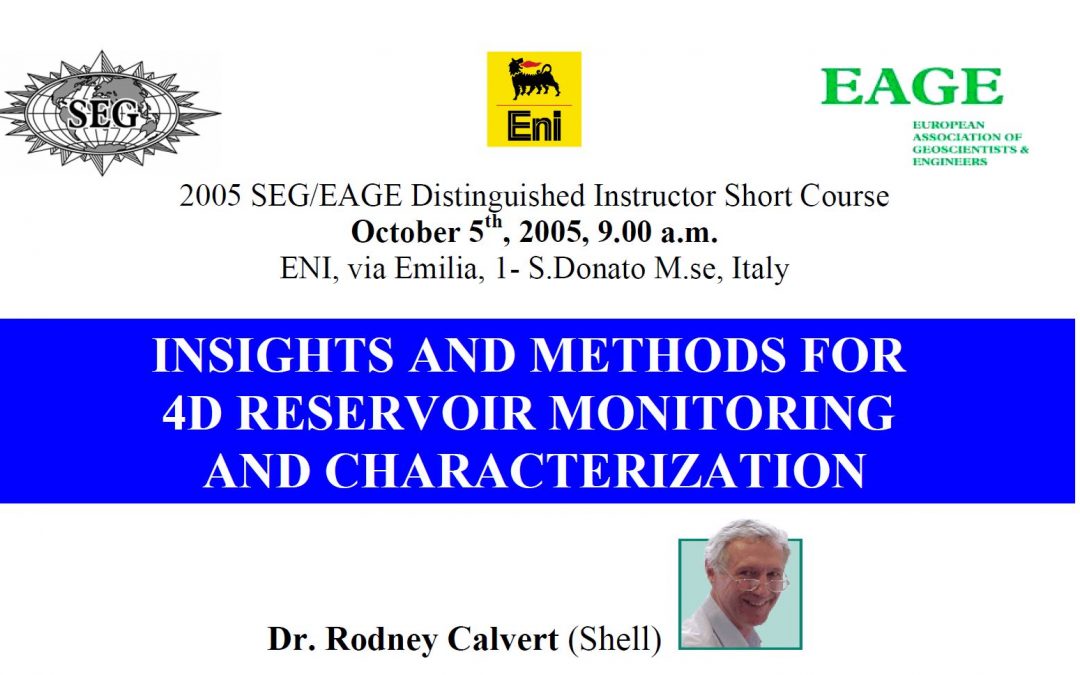Dr. Rodney Calvert (Shell)
INSIGHTS AND METHODS FOR
4D RESERVOIR MONITORING
AND CHARACTERIZATION
2005 SEG/EAGE Distinguished Instructor Short Course
October 5th, 2005, 9.00 a.m.
ENI, via Emilia, 1- S.Donato M.se, Italy
ABSTRACT
4D can give major returns if applied properly. However, it is still a rapidly evolving technology. Participants in this one-day course come away with a basic understanding of the issues leading to success and failure and the methods to ensure success.
The course will address the following questions:
- What methods of seismic 4D monitoring are appropriate for different types of fields and production mechanisms are appropriate for? What questions can 4D answer? Are there any alternatives?
- What are the seismic quality requirements and how can we assure they are sufficient? What 3D problems can we difference away to get good 4D?
- There are now more and more options available for seismic acquisition with streamers, OBC, OBS and downhole possibilities. How do we make the best choice for quality and price? Some real breakthroughs are now possible.
- What should we measure from our data? What are the important reservoir engineering questions? What do people mean by “quantitative 4D” and what is possible with petrophysical and reservoir engineering cooperation?
- How can we update a reservoir model using 4D data and 4D history matching?
- How should we make 4D monitoring an integral part of field development and management? How might this change our industry?
Participants will be able to take home and use the answers and methods discussed in this course.
WHO SHOULD ATTEND
Anyone interested in understanding the methods of 4D and their potential. This course is suitable for managers who must make the important decisions, for reservoir engineers who want to understand the results, for seismologists who have to get the results, and for anyone else who would like to learn how to remotely track subsurface processes in 3D as they happen. Advanced knowledge of seismic theory is not required; this course is about understanding and practice.
BIOGRAPHY
Dr. Calvert started his first time-lapse work measuring continental drift in Iceland as part of a Ph.D. from 1966-69.
He joined Shell in The Hague as a seismic processor, then became a processing manager for Shell Malaysia. He was heavily involved with Shell’s early 3D efforts in the North Sea. He held several research and management positions in geophysics and integrated reservoir characterization before returning to 4D. A highlight of his career has been working in Canada where he developed an addiction to backcountry skiing. He is now stationed in Houston where the closest he gets to skiing is frightening himself and the local community on his roller blades.
Eni Internal registration by Gesform. Online registration at http://www.eage.nl/education/. Registration Deadline: September 30th. The registration fee is 35€ for EAGE/SEG members, 105€ for non-members.


Recent Comments